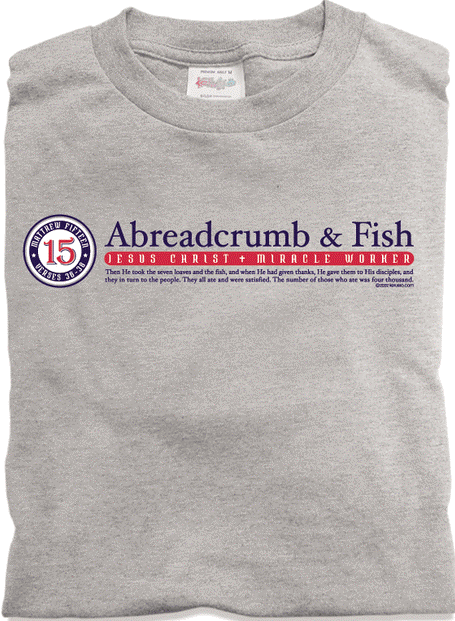Entries by Michael Atkins (1064)
Guest Post: Larry Friedman on the Role of Customs in Brand Protection
 Following is STL’s perhaps first-ever guest post, by Larry Friedman, who is a partner in Barnes, Richardson & Colburn and blogs on customs and trade related matters at the Customs Law Blog.
Following is STL’s perhaps first-ever guest post, by Larry Friedman, who is a partner in Barnes, Richardson & Colburn and blogs on customs and trade related matters at the Customs Law Blog.
In fiscal 2009 (October 1, 2008 to Oct 1, 2009), U.S. Customs and Border Protection made 14,841 seizures to protect U.S. intellectual property rights. The domestic value of the seized merchandise was over $260 million. Of that value, nearly 80% originated in China. Footwear was the most seized commodity accounting for almost $100 million.
Based on these statistics, it is clear that Customs plays an important role in the protection of U.S. intellectual property rights. Customs has identified stopping the importation of infringing products as a priority objective. To do this, Customs relies on its legal authority to examine, detain, and seize infringing merchandise. That authority is derived from the Tariff Act of 1930, the Lanham Act, the Copyright Act, and the Digital Millennium Copyright Act. In some cases, importing infringing merchandise can lead to criminal prosecution.
With respect to trademarks, Customs deals with three categories of merchandise: counterfeits, products bearing confusingly similar marks, and gray market goods. Counterfeits are products bearing marks that are identical with or substantially indistinguishable from federally registered trademarks. When Customs encounters counterfeit marks, it can seize the merchandise, which will then be forfeited. Forfeited merchandise is destroyed or, under some circumstances, donated to governmental agencies or charities after the offending mark is removed.
For confusingly similar marks, Customs will detain the merchandise for up to 30 days. During that time, the importer can seek the release of the merchandise by proving that it is not actually infringing or by removing the mark. If, following that 30-day period, the importer is unsuccessful in securing the release of the merchandise, Customs will seize and forfeit it.
For U.S. trademark holders, an important element of Customs enforcement is the recordation of trademarks. This is separate from registration with the Patent and Trademark Office. Recordation is a process of recording registered trademarks with Customs so that it can enter them into a database accessible to enforcement personnel at the various ports. Customs must seize products it discovers bearing counterfeit copies or recorded marks and will only seize counterfeits of unrecorded marks when practical. For confusing marks, Customs will not take any action to protect marks that are not recorded with the agency.
Recordation with Customs is an easy process. Customs has established an online Intellectual Property e-Recordation (IPRR) system to facilitate recordation. Customs only accepts recordations for marks on the principal register of the PTO. To register, the applicant must submit:
This raises particular concerns for importers of the third category of merchandise: gray market goods. Gray market goods are legitimate products purchased abroad from third parties and imported without the authorization of the U.S. trademark holder. In most cases, this type of trade is legal. There are exceptions for products that are materially different from the product sold in the U.S. and where the trademark was applies abroad by a company not under the control of the U.S. trademark owner.
Even when the gray market products are imported legally, it is often difficult for importers to prove that they are not counterfeit. That is because there is no documentation showing a relationship between the U.S. buyer and a legitimate manufacturer of the merchandise. Thus, importers of legitimately imported gray market goods run the risk of losing their merchandise and should, therefore, carefully consider the risks of entering into the transaction.
After recording their trademarks, U.S. rights holders should consider working with Customs officials to ensure they have the knowledge and tools necessary to identify counterfeit and infringing products. This can be done through port-level personnel or Customs Headquarters in Washington. Customs will be particularly interested in the identification of counterfeits that represent a threat to public health and safety. Because of that, Customs actively works with companies in the pharmaceutical and electrical products industries and pays particular attention to certification marks that indicate compliance with safety standards.
For U.S. companies that find themselves struggling to eliminate counterfeits and infringing products from the market, U.S. Customs and Border Protection can be an important ally. To enlist Customs in that effort, companies must record trademarks and work closely with Customs authorities. In the end, trademark holders are likely to find that the $190 recordation fee was an excellent investment.
Happy New Year!
Merry Christmas!
Merry Christmas!
Of course, I’m referring to MERRY CHRISTMAS, Serial No. 78161138, the alleged trademark used in International Class 32 in connection with “non-alcoholic juice beverage, namely fruit juices.” This application was abandoned in January 2005 after the PTO issued a final refusal because the alleged mark is merely ornamental and does not function as a trademark.
The examining attorney properly found the proposed mark “does not function as a trademark to indicate the source of the identified goods.” He added: “The slogan is merely a sentiment expressed by one to another. Therefore, the slogan is merely indicative of the sentiments of the participants and not used as a source indicator.”
That’s not to say MERRY CHRISTMAS can’t ever serve as a trademark. See, for example, Reg. No. 3254339 in International Class 3 for “Non-medicated skin care products namely scrubs; scented heat-to-toe body wash” and Reg. No. 3561707 in International Class 34 for “Cigar and cigarette boxes; Cigar and cigarette boxes not of precious metal; Cigar bands; Cigar boxes; Cigar boxes not of precious metal; Cigar tubes; Cigars.”
The difference in the MERRY CHRISTMAS marks is simple: the one that only serves as a sentiment and not a source indicator isn’t registrable; the ones that serve as an indicator of source function as a trademark and, therefore, are registrable like any other valid mark.
Bing! Information Design Ad Agency Sues Microsoft Over "Bing" Search Engine
 Think this comes from Microsoft?
Think this comes from Microsoft?
Screen shot from ad agency Bing! Information Design’s Web site
Bing! Information Design, LLC, is suing Microsoft Corp. for trademark infringement over Microsoft’s use of BING as the name of its search engine.
The complaint, filed Dec. 15 in Missouri Circuit Court, alleges that Microsoft has created “confusion and/or reverse confusion and damage to Plaintiff who had previously been utilizing its trademark ‘Bing!’.”
I don’t see it.
Bing! Information is an ad agency in St. Louis (and, interestingly, is a Washington LLC). It says it focuses on information graphics, multimedia and interactive projects, illustrations, charts, maps, animation, and technical diagrams.
Microsoft offers search engine software that was formerly known as MICROSOFT LIVE SEARCH.
I just don’t see much of a likelihood of confusion.
Bing! Information also has extended the time to oppose Microsoft’s intent-to-use application to register BING in International Class 9 for “computer search engine software; graphical user interface software, namely toolbar software for use with search engine software and websites”; in Class 35 for “advertising services; dissemination of advertising for others via the Internet; providing consumer product information via the Internet; advertising and directory services, namely, promoting the goods and services of others by providing a website featuring links to the websites of others; providing online directory services featuring business and personal directory information; providing an Internet website featuring news and information in the fields of national and international politics and business”; and in Class 38 for “telecommunication services, namely, receipt and delivery of information, messages, documents, images and other data by electronic transmission; streaming of audio and video on the Internet.”
Bing! Information has applied to register its BING! trademark in Class 16 for “Illustrations; Printed visuals in the nature of information graphics, charts, maps; Stories in illustrated form”; and in Class 35 for “Advertising agencies, namely, promoting the goods and services of others; Advertising and promoting the goods and services of a visual artist; Advertising particularly services for the promotion of goods; Advertising services, namely creating corporate and brand identity for others; Advertising services, namely, creating corporate logos for others; Advertising services, namely, production of special effects including model-making services, computer-generated imagery and computer-generated graphics for the production of commercials; Advertising via electronic media and specifically the internet; Design of advertising flyers for others; Design of advertising materials for others; Design of internet advertising; Providing advertising services using 3D and animation designs.” Bing! Information claims a first-use date of January 19, 2000.
I see a little overlap in the parties’ services descriptions, but I still don’t see much of a chance that consumers are going to think that Microsoft’s search engine services come from a St. Louis ad agency, or that a St. Louis ad agency is responsible for Microsoft’s search engine.
Long and detailed post here.
AP Article Highlights Christian-Themed Trademark "Parodies"

From Abercrombie & Fitch to “Abreadcrumb & Fish”?
One Christian marketing consultant calls it “Jesus junk.”
It’s Christianizing a famous logo — Taking IPOD and turning it into IPRAY.
It’s really called trademark infringement and trademark dilution. It’s not parody, which protects a speaker’s right to use a trademark when criticizing the trademark owner.
Last week, the Associated Press highlighted this issue, which sometimes has corporations stuck between enforcing their trademark rights and not wanting to alienate their Christian customers.
I offered a couple quotes from the perspective of a disinterested trademark attorney.
“I think you have a real tension between the legal department and the PR department. (Large companies) are very sensitive to looking like they are anti-Christian, so they are very restrained in going after the wrongdoers.”
So what’s legal as parody?
“You could take Microsoft and change their logo around to make fun of Microsoft, and that would be legal. But I can’t use the Microsoft logo to promote my Christian theme because there’s no real connection there. That’s illegal.”
Interesting issue, which STL discussed a while back. It’s nice to see the mainstream press elevating it in the public’s consciousness.